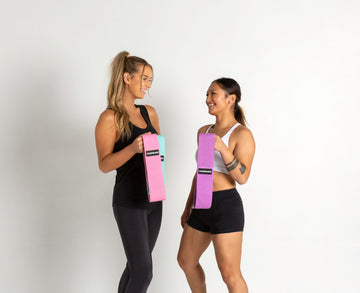Yoga is among the most helpful exercises to boost the mind and body, and the best part about it is the vast range of movements that cater to different fitness levels. Regardless of the type of yoga one does to improve their lifestyle, adding body resistance bands to the routine can improve the overall experience by boosting the physical and mental connection.
Keep reading below to discover why the workout accessory does wonders and impacts the world of wellness.
They Refine Alignment During Routines
Yoga requires a strong sense of understanding cues to reach the ideal alignment. However, it can be difficult for some people to follow prompts because language can be abstract. Also, there are instances where students get too overwhelmed with anatomical terms, hindering them from doing the correct pose.
For instance, a yoga teacher may instruct students to “lift their thighs and sink the back of their legs while keeping their pelvis steady.” Some students might wonder how to bring their thighs up or prevent their pelvis from moving. Others may not be familiar with the term pelvis, making it frustrating to do the routine.
Resistance bands clarify cues and allow the person to feel the movement. When an instructor tells students to “press the feet firmly on the ground and lift the body through the top of the head,” they can loop the band under their heels and over the head. Afterwards, they should press their feet down to lift their spine correctly.
They Improve Joint Stability
Hyperextending movements can go unnoticed. It is essential to stabilise the joints and strengthen the muscles by practising isometric work. In practice, isometric contractions don’t allow the muscle groups to lengthen or shorten, all while keeping the joints steady. It brings a new dynamic to the joints while supporting them physically. Resistance bands help fully engage the muscles and stabilise the joints to reap the benefits of yoga.
For instance, the elbow can “lockout,” and pressure forms and makes the triceps firm while doing the tabletop position. To engage the muscle around the elbow joint, place a resistance band around the upper arms and push it so the pressure shifts to the entire joint rather than partially engaging it.
They Sharpen Proprioceptive Feedback
Along with clarifying the physical signals, resistance bands improve one’s spatial intelligence. It allows the person to understand the movements better according to the available space and resistance, which helps make accurate pose adjustments.
For instance, it may be difficult to tell if the hands are straight when reaching the arms to do the urdhva hastasana or upward salute. But with the help of a resistance band, the position is at a precise distance, sharpening the proprioceptive feedback resulting in effective practice.
They Control Movement
Resistance bands keep the movements accurate, allowing the performer to have a greater sense of control over their body. The external force can be challenging, but it increases awareness while doing the movements to strengthen the muscles.
They Reinvent Monotonous Movements
If a person has been practising yoga for quite some time, some movements appear repetitive and boring. Resistance bands bring the challenge back and even reinvent common poses such as a downward-facing dog by promoting muscle engagement.
Conclusion
Resistance bands may look underwhelming for some people. But wait until it shows its real power by enhancing every movement and improving the routine. It is a gym accessory that creates a new experience for its user, providing a harmonious mind-body connection.
Do you want to reinvent your workout routine? Get your hands on the best resistance bands for home workout in Australia and shop at POWERBANDS®. Made with the finest materials, our resistance bands can endure the most strenuous workout sessions. Browse our shop now to see our array of bands, and always keep moving!








